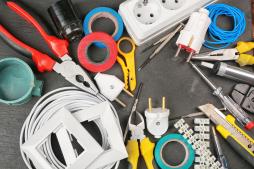Common Mistakes to Avoid When Adding GFCI Protection to Bathroom Outlets
Adding GFCI (Ground Fault Circuit Interrupter) protection to bathroom outlets is an essential safety upgrade that helps prevent electrical shock. However, without proper knowledge, it’s easy to make mistakes that could compromise the effectiveness of the protection or lead to other hazards. In this article, we’ll explore common errors people make when installing GFCI protection in bathrooms and how you can avoid them for a safe and reliable setup.
Mistake 1: Not Understanding Local Electrical Codes
One of the first mistakes is ignoring or being unaware of local electrical codes and regulations. Bathrooms have specific requirements for GFCI outlets because of moisture and water exposure risks. Before installation, it’s crucial to check your area’s codes to ensure compliance with safety standards. This prevents legal issues and guarantees that your installation meets necessary safety benchmarks.
Mistake 2: Attempting Installation Without Proper Knowledge
Many homeowners attempt DIY installation without understanding electrical wiring or how GFCI devices work. Incorrect wiring can render the GFCI ineffective or cause nuisance tripping. If you’re not confident in handling electrical circuits, it’s best to hire a licensed electrician who can ensure correct installation and testing.
Mistake 3: Using Standard Outlets Instead of GFCIs in Bathrooms
A common oversight is simply replacing old outlets with standard ones instead of installing proper GFCI outlets designed for wet locations like bathrooms. Standard outlets do not provide ground fault protection, which increases the risk of shock hazards near water sources.
Mistake 4: Ignoring Correct Line and Load Connections
GFCI receptacles have specific terminals labeled ‘line’ (incoming power) and ‘load’ (downstream protected outlets). Reversing these connections will prevent the device from functioning correctly, leaving downstream outlets unprotected or causing constant tripping issues. Always double-check terminal connections during installation.
Mistake 5: Not Testing After Installation
After installing a GFCI outlet, failing to test it is a critical mistake. Most GFCIs have a built-in test button; pressing it simulates a fault condition ensuring the unit trips as intended. Regular testing ensures ongoing safety by confirming your device operates properly over time.
Adding GFCI protection to bathroom outlets significantly enhances electrical safety when done correctly. By familiarizing yourself with local codes, using proper equipment, following manufacturer instructions carefully, and testing after installation, you can avoid common pitfalls that compromise protection effectiveness. If unsure at any step, consulting a professional electrician is always recommended for peace of mind.
This text was generated using a large language model, and select text has been reviewed and moderated for purposes such as readability.











